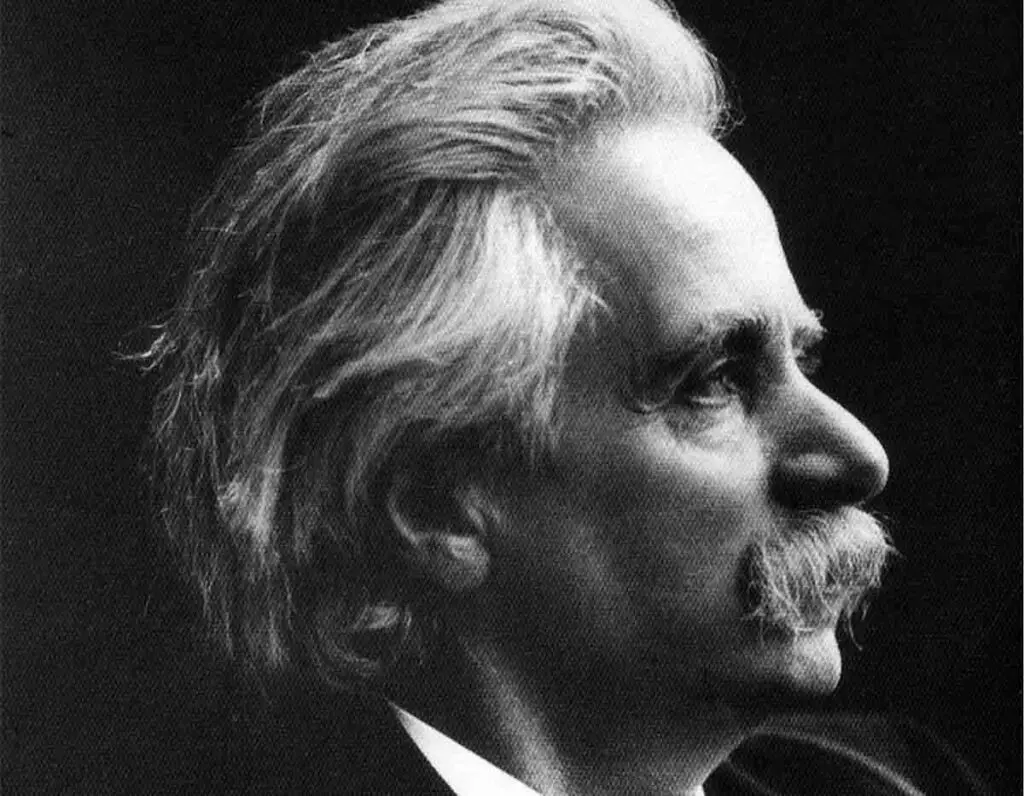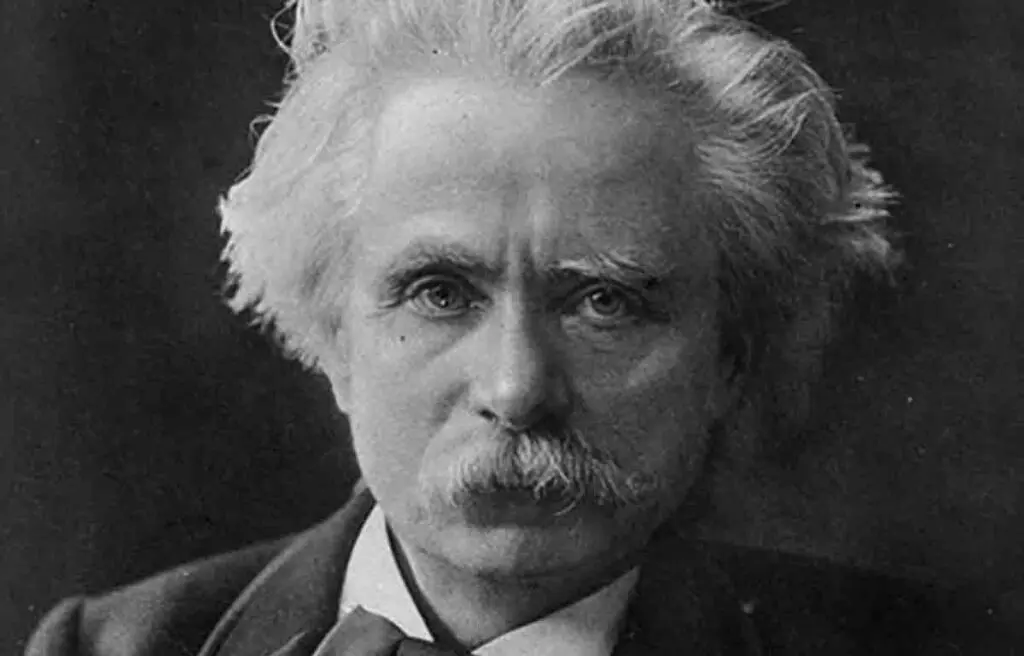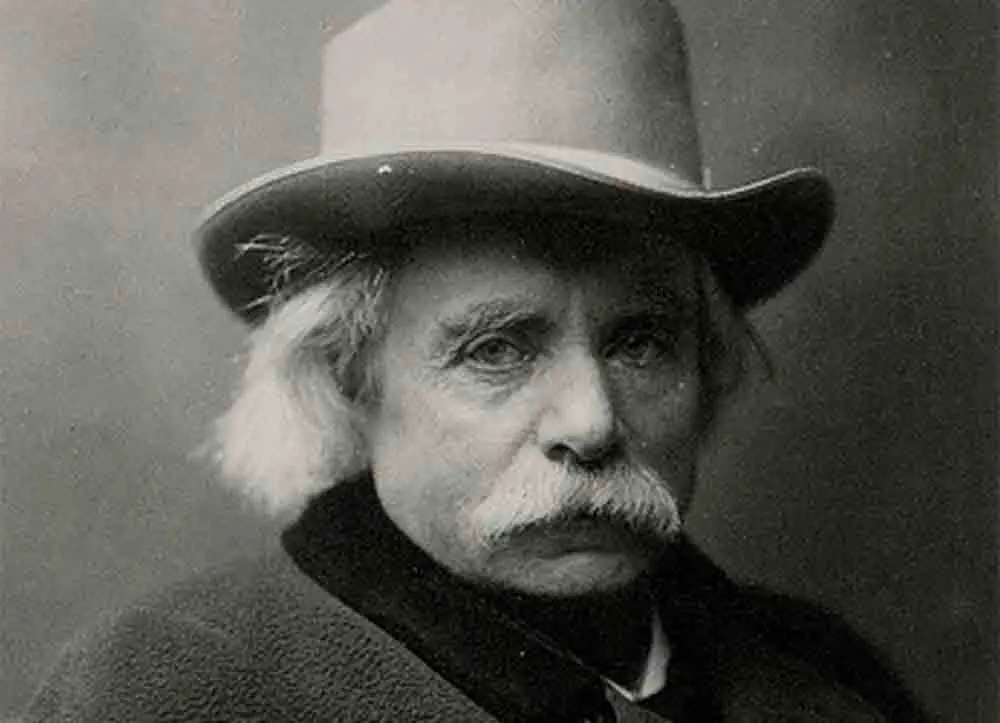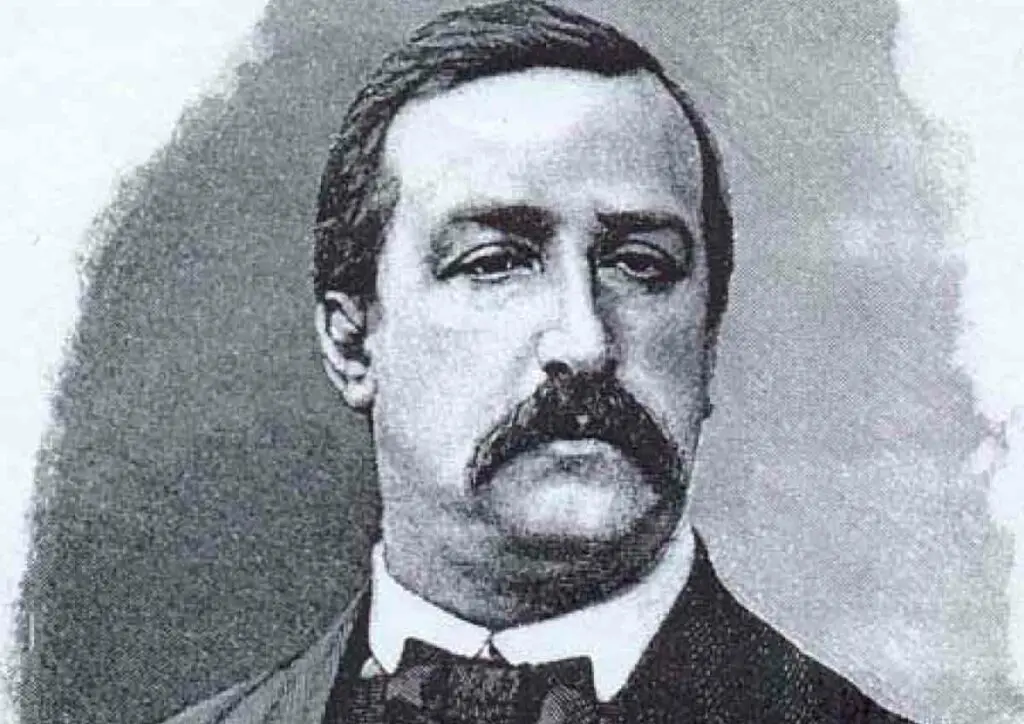Edvard Grieg is a brilliant Norwegian composer and conductor. He is the author of 600 amazing works. Grieg was at the very center of the development of romanticism, so his compositions were saturated with lyrical motifs and melodic lightness. The maestro's works are still popular today. They are used as soundtracks for films and TV shows.

Edvard Grieg: Childhood and youth
He was born in 1843 in Bergen. Grieg was brought up in a primordially intelligent family, where they respected not only poetry, but also music. Edward, recalled his childhood only in a good way.
He owes his passion for art to his mother, an amazing pianist and singer. She raised her children on the immortal works of Mozart and Chopin. Edward sat down at the piano for the first time at the age of three, and already at the age of 5 he composed his first work.
The young maestro wrote the melody for piano at the age of 12. On the recommendations of his teacher, he entered the Leipzig Conservatory. The teacher who worked with Edward predicted a good future for him, but Grieg himself doubted the professionalism of the teacher, so he refused his services.
The creative path of the composer Edvard Grieg
While studying at the conservatory, Grieg absorbed knowledge like a sponge. During his student years, he wrote several pieces for piano. In addition, during this period of time, the maestro composed 4 lyrical romances.
It was not difficult for him to graduate from the conservatory with honors. He was the favorite of professors and teachers. The mentors saw in him an original composer who would undoubtedly contribute to the development of classical music.
After graduating from the conservatory, Edward will hold his first concert in Switzerland. However, he will not remain in the country. He was attracted by the Motherland, so he went to Bergen.
He settled in Copenhagen. In the 60s he composed six excellent piano pieces. Soon he combined the works into Poetic Pictures. The highlight of the works, according to music critics, was the national flavor.

Founding of the music community
A few years later, Grieg and other Danish composers founded the Euterp musical society. They pursued the goal of introducing classical music lovers to the works of Danish composers. This period of time in Grieg's creative biography is marked by the presentation of the composition "Humoresque", the overture "Autumn" and the First Violin Sonata.
The composer quickly climbed the career ladder. Soon the maestro, together with his wife, moved to the territory of Oslo. Grieg was offered a position as a conductor at the local Philharmonic.
It was this time that was marked by the flourishing of the musician's creative biography. He presented his fans with a copybook of "Lyric Pieces", the Second Violin Sonata, as well as the immortal cycle "25 Norwegian Folk Songs and Dances".
In 1870, Grieg was lucky enough to get to know the composer Liszt. The latter was genuinely delighted after hearing the Maestro's First Violin Sonata. List repeatedly thanked Edward for his support.
Another proof of Grieg's popularity is the fact that in the 70s the government appointed the maestro a lifetime payment. Thus, the officials wanted to maintain the composer's "light".
This period of time is also interesting because the musician gets acquainted with the poet Henrik Ibsen. Grieg admired his works as a child. Edward wrote the musical accompaniment for Ibsen's drama. We are talking about the composition "Peer Gynt". This event led to the fact that the maestro turned into an international celebrity.
After these events, Grieg returned to his historical homeland not only as a popular, but also as a wealthy composer. Upon arrival, he settled in the villa "Trollhaugen", where he worked until his death.

The maestro was impressed by the beauty of the place where his estate was located. This inspired Grieg to write the compositions "Procession of the Dwarves", "Kobold", "Songs of Solveig" and a dozen brilliant suites.
He wrote a lot to his friends. In his letters he described the beauties of majestic Norway. He sang about nature and conveyed all the subtleties of the natural elements. His compositions from the period of his life in Trollhaugen are hymns to vast forests and swift rivers.
Travels of the composer Edvard Grieg
Despite his advanced age, the maestro travels extensively in Europe. Visiting cultural capitals, he continues to tour, delighting fans of his work with a brilliant performance of immortal hits.
At the end of the 80s, the musician meets the Russian composer Pyotr Tchaikovsky. They understood each other from the first seconds. The acquaintance of the composers grew into a strong friendship. Tchaikovsky dedicated the Hamlet Overture to Grieg. Peter admired the work of his foreign comrade in his memoirs.
A couple of years before his death, the maestro will release the autobiographical story "My First Success". Fans also admired the poetic talent of the maestro. Critics noted the composer's light style. He humorously told the reader about how his career developed: from an unrecognized master to a real idol of millions.
Grieg did not leave the stage until the end of his days. The last concerts of the maestro were held in Denmark, Norway and the Netherlands.
Edvard Grieg: Details of his personal life
As noted in the first half of the article, after graduating from the conservatory, Edward moved to Copenhagen. His heart was won by his cousin Nina Hagerup. Grieg saw the girl for the last time when she was only 8 years old. Meeting her again, Edward noted that she blossomed and prettier.
Relatives were outraged that Grieg was trying to take care of the young beauty. The maestro himself did not care much about the indignation of strangers. He made Nina an offer of marriage. The condemnation of society and family ties did not prevent the young from legitimizing their relationship. They got married in 1867. Moral pressure forced the family to move to the territory of Oslo, and a couple of years later the couple had a child. Happy parents named the girl Alexander.
The girl died in infancy. The child was diagnosed with meningitis, and it was this deadly disease that took the girl's life. Grieg and Nina were very upset by the loss. Their marriage was in the balance. The woman mentally could not survive the loss of a child. Nina got depressed. She soon filed for divorce.
The departure of his wife Grieg considered a betrayal. He loved Nina and did not want to get divorced. Against the backdrop of experiences, the musician was diagnosed with pleurisy, which threatened to develop into tuberculosis. The composer's illness united the hearts of the former spouses. Nina returned to the maestro and looked after Edward.
It was the woman who motivated to build a villa outside the city. Later, Grieg will thank Nina for this idea, since it was here that he found peace.
Interesting facts about the composer
- Grieg composed compositions only in absolute silence. Perhaps that is why he built a house away from the noise of the city.
- He skillfully played the piano and violin.
- Unlike many colleagues on stage, Grieg tried not to criticize composers and musicians.
- He carried with him a souvenir, which was a clay frog of small size.
- He managed to offend the King of Norway himself. When he presented him with the order, Grieg did not know where to hang the award, and simply put it in his back pocket.
Death of a maestro
In the spring of 1907, the composer went on another tour. After that, he wanted to go on a UK tour. He went on a trip with his wife, settling in one of the local hotels, the maestro felt very unwell. He was sent to the hospital on time.
He passed away on September 4th. On this day, almost all the inhabitants of Norway mourned the great maestro. Edward bequeathed to cremate the body and bury the ashes near the villa. It should be noted that later the ashes were re-buried at the Ninu Hagerup cemetery.
The villa, where the composer lived for more than 10 years, is open to fans of the great composer and musician. Grieg's belongings, his work and personal belongings are preserved in the building. The atmosphere that reigns in the villa perfectly conveys the character of its owner. In honor of Grieg, the streets of his native town are named. Thanks to the brilliant musical works, the memory of the maestro will live forever.



